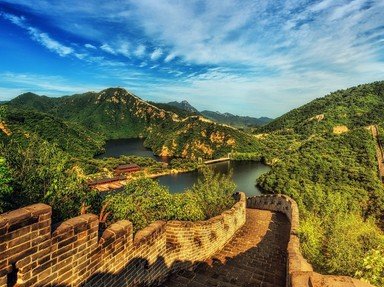Quiz Answer Key and Fun Facts
1. Xi'an is a city in Shaanxi province, roughly in the middle of China. Formerly known as Chang'an, which of the following China-specific descriptions applies to this city?
2. Xi'an was the eastern terminus for a trade route which started up over 2,000 years ago. What was the name of this route?
3. What was the main beast of burden used on the trade route between China and the West?
4. The Wei River valley in which Xi'an sits is considered to be one of the cradles of Chinese civilisation, possibly the oldest. At Banpo, near Xi'an, Neolithic settlements dating back more than 6,000 years have been found. Which period does this fall into?
5. Xi'an can boast the Grand Mosque, founded nearly 1,300 years ago and the oldest in China. How did Islam arrive in China?
6. The first Chinese emperor Qin Shi Huang had his capital at Xianyang, now part of Xi'an. He had a mausoleum built for himself over a 38-year period in the third century BC. What material was used in making the warriors, who were his garrison in the afterlife?
7. In more recent times, the Xi'an Incident took place in December 1936 during the Chinese Civil War between the Kuomintang (KMT) and the Communist Party of China (CPC). This was the arrest of Chiang Kai-shek, leader of the KMT, by two of his generals shortly before the Second Sino-Japanese War. What happened next?
8. Giant Wild Goose Pagoda, dating from 652, was built in Xi'an to house sacred texts and artefacts collected by the monk, scholar and traveller Xuanzang during a 19-year journey to India to visit the source of his religion. Which religion was this?
9. Written in 646 in Xi'an, "Great Tang Records on the Western Regions" records the exploits of Xuangzang during his lengthy travels. "Journey to the West" is a 16th century novel based on this and is considered one of the four great classical novels of Chinese literature. English sinologist Arthur Waley provided a highly-abridged translation of this in his 1942 book. What is the simian title of this book?
10. Built in 1384 by Zhu Yuanzhang, first emperor of the Ming Dynasty, the Bell Tower marks the centre of Xi'an. Other than as a landmark, what was its purpose?
Source: Author
suomy
This quiz was reviewed by FunTrivia editor
bloomsby before going online.
Any errors found in FunTrivia content are routinely corrected through our feedback system.
